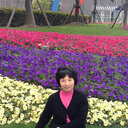[Comparison of antioxidant activity between two species of chamomiles produced in Xinjiang by TLC-bioautography].
מילות מפתח
תַקצִיר
OBJECTIVE
To compare the antioxidant active components from two species of chamomile-matricaria and Roman chamomile produced in Xinjiang.
METHODS
The TLC-bioautography was used, with 1,1-Diphenyl-2-picrylhydrazyl (DPPH) radical as the experimental model. The peak areas of various antioxidant components were obtained by TLC-scanning for analyzing antioxidant active components contained in volatile oil extracts and flavone extracts from the two species of chamomiles. The total peak area was taken as the indicator for comparing the antioxidant capacities of the two types of extracts, and comparing them with the total antioxidant activity of flavone extracts of the two species of chamomiles.
RESULTS
According to the result of TLC-bioautography in volatile oil extracts from the two species of chamomiles, volatile oil extracts from chamomile showed four white antioxidant spots, including en-yne-dicycloether, and volatile oil extracts from Roman chamomile showed only one white antioxidant spot. The TLC-scanning result showed that the peak area of antioxidant spots of volatile oil extracts from chamomile was significantly larger than that of volatile oil extracts from Roman chamomile. According to the test on the antioxidant activity of the two species of chamomiles with ultraviolet-visible spectrophotometry, the concentration of chamomile after scavenging 50% of DPPH radicals was 0.66 g x L(-1), whereas the figure for Roman chamomile was 0.33 g x L(-1). According to the result of TLC-bioautography in flavone extracts from the two species of chamomiles, flavone extracts from chamomile showed seven yellowish antioxidant spots, including apigenin and apigenin-7-glucoside, and flavone extracts of Roman chamomile showed eight yellowish antioxidant spots, including apigenin and apigenin-7-glucoside. The TLC-scanning results showed that the peak area of antioxidant spots of flavone extracts from Roman chamomile was significantly larger than that of flavone extracts from chamomile.
CONCLUSIONS
Volatile oil extracts from the two species of chamomiles have significant difference in the antioxidant activity in TLC-bioautography. Specifically, the antioxidant activity of volatile oil extracts from chamomile is stronger than volatile oil extracts from Roman chamomile; the known antioxidant active components in volatile oil extracts from chamomile is en-yne-dicycloether, while all of the other three antioxidant active components as well as antioxidant active components in volatile oil extracts from Roman chamomile are unknown components and remain to be further determined. Considering the significant difference in the number of antioxidant active spots in volatile oil extracts from the two species of chamomiles, the result can be applied to distinguish the two species of chamomiles. The antioxidant activity determination result for flavone extracts from two species of chamomiles was consistent with the result of TLC-bioautography, showing that flavone extracts from chamomile and Roman chamomile are more antioxidant active, while that of Roman chamomile is stronger than chamomile. Flavone extracts from both of the two species of chamomiles contain apigenin and pigenin-7-glucoside, which are known, while all of the other five antioxidant active components contained in flavone extracts from chamomile and the other six antioxidant active components contained in flavone extracts from Roman chamomile are unknown and remain to be further identified. The method lays a foundation for further identification of antioxidant active components contained in chamomile.


